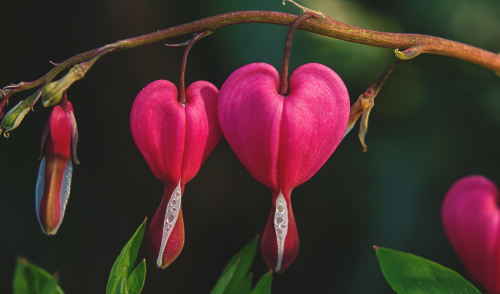
Gardening in the Shade
Every gardener knows the vital importance sunlight plays for healthy plants, lush foliage, amazing flowers, and bountiful harvests. That doesn’t mean gardening in the shade is impossible, however, but shade gardens do require some special considerations to thrive.
Defining Your Shade
Shade is more than just light or dark. There are many different degrees of shade, from partial shade at different times of day or times of the year to dappled shade or light shade where some sunlight does get through to the ground. The thickness of the shade and how many hours the area is in the deepest, darkest shade will help determine just how shady your garden is. Understanding that shade is essential to plan a garden that will grow in challenging light conditions. Watch your garden carefully, checking at different times of day to note where the shade is deepest, and take notes about how the light levels change seasonally so you can more accurately determine what type of shade gardening will work best.
Best Plants for Gardening in the Shade
No matter what type of garden you’d like, there are plants that appreciate some protection from direct sunlight. While the boldest flowers and juiciest produce do typically require several hours of full sunlight to do their best, there are still amazing options that will perform well in the shade.
- Foliage: Plants with broad, dramatic leaves often do very well in shady conditions, and can provide both color and textural interest for shade gardens.
- Hosta, English ivy, coleus, ferns, philodendron, rhododendron, boxwood, copper plant
- Flowers: Different types of flowers that need cooler, shadier conditions can add a pop of color to a shade garden. Choose flowers that bloom at different times for ongoing accents.
- Hydrangea, coral bells, begonia, bleeding hearts, pansies, lily-of-the-valley, hellebore
- Vegetables: Leafy greens and root or tuber vegetables perform best in shade conditions, and can create a healthy, delicious garden with a bountiful harvest.
- Broccoli, carrots, kale, lettuce, cabbage, celery, peas, potatoes, radishes, spinach, beets
- Fruits: You don’t have to forgo fruits if you are gardening in the shade, but you do have to be careful to select varieties that perform best with only limited sunlight.
- Rhubarb, blackberries, raspberries, pears, plums, cherries
- Herbs: Add a burst of flavor to your shade garden by planting a selection of delicious herbs that are ideal for salads, sauces, marinades and other dishes.
- Garlic, chives, mint, sage, parsley, rosemary, cilantro, lemon balm
With so many options to choose form, there is no reason why you can’t have a widely varied, amazing garden even in the shadiest spot.
Tips for the Best Shade Garden
Because a shade garden doesn’t get all the benefits of abundant sunlight, it is important to be sure that other factors in the garden are rich and healthy for plants. By properly nurturing the garden, not as much sunlight will be necessary to make the most of every plant.
- Water the garden appropriately, but be aware that shade gardens are generally cooler and water will not evaporate as quickly. Avoid overwatering that can cause rot and erosion.
- Amend the soil with suitable fertilizer or compost as needed to restore its nutrition and nourish plants. Choose fertilizer blends specially formulated for shade plants for the best results.
- Watch carefully for pests, mold, and fungus. Snails and slugs are especially fond of shade gardens and can quickly damage plants if left unchecked.
- Keep the garden properly pruned to encourage air circulation that will keep each plant healthy and minimize the risk of molds or fungus.
Adding More Sunlight to Your Garden
Even plants that thrive in shade do require some sunlight to reach their best potential. No matter how deep the shade is in your garden, there are easy ways you can increase the sunlight to give plants a more nourishing environment.
- Prune and thin nearby trees and shrubs to lighten the canopy casting shade over the garden. This will allow more sunlight into the area for the garden to absorb.
- Brighten up the surrounding area by painting an adjacent fence, shed, or other structure white. This will reflect more sunlight into the garden and increase its light level.
- Consider using reflective mulch covers that will help brighten the garden and provide greater sunlight to nearby plants.
Shade can provide a challenge for gardeners, but gardening in the shade doesn’t have to be limited or unproductive. By understanding your shade properly and taking steps to make the most of it, you can still have a thriving garden even without full sunlight.

